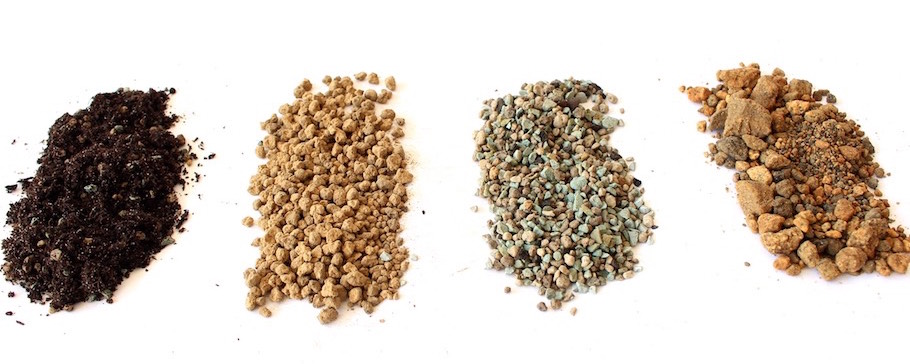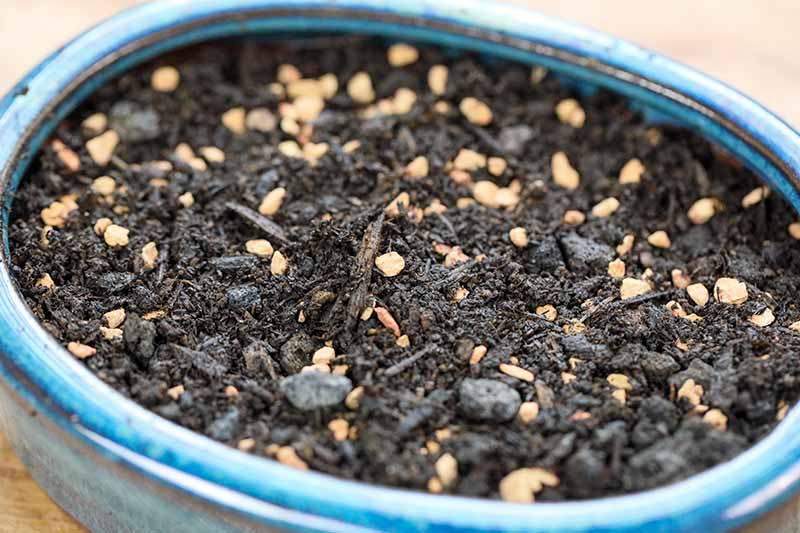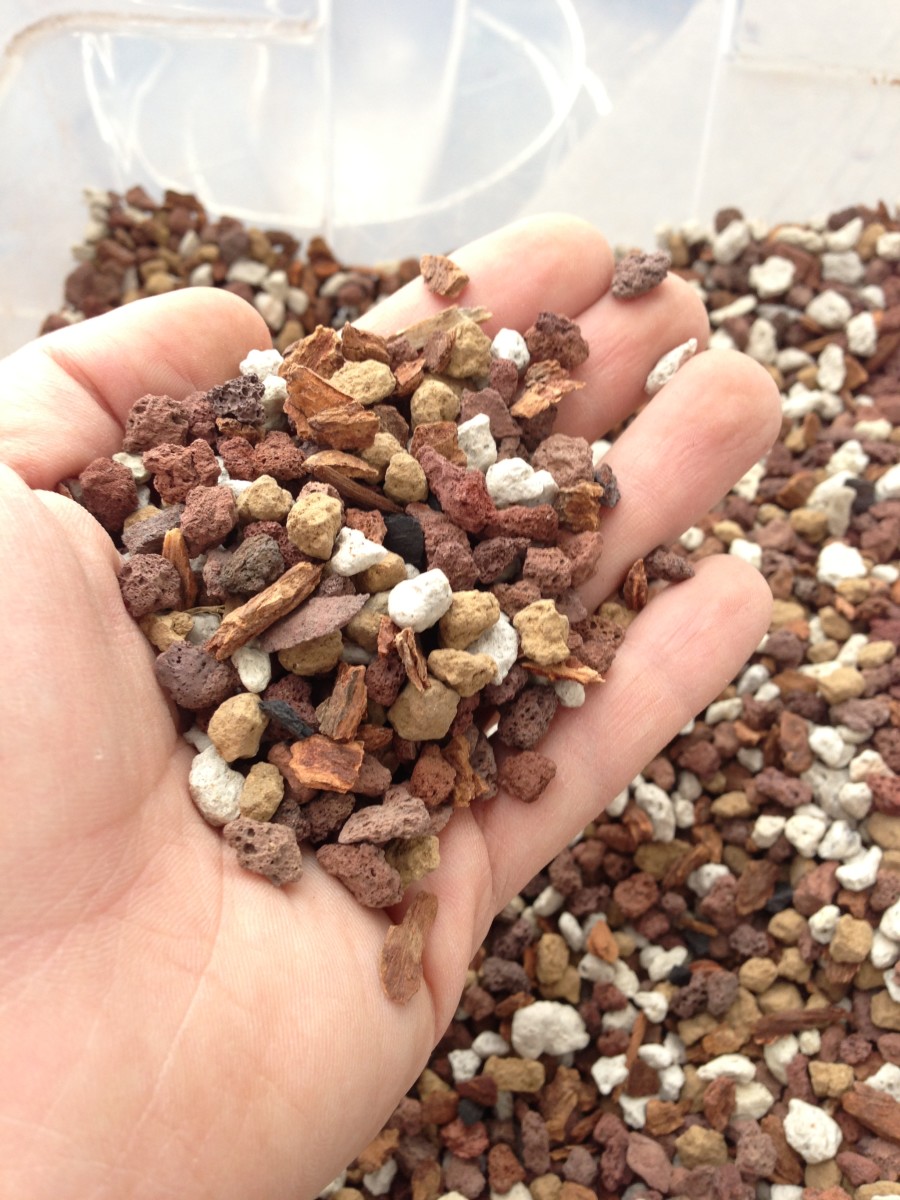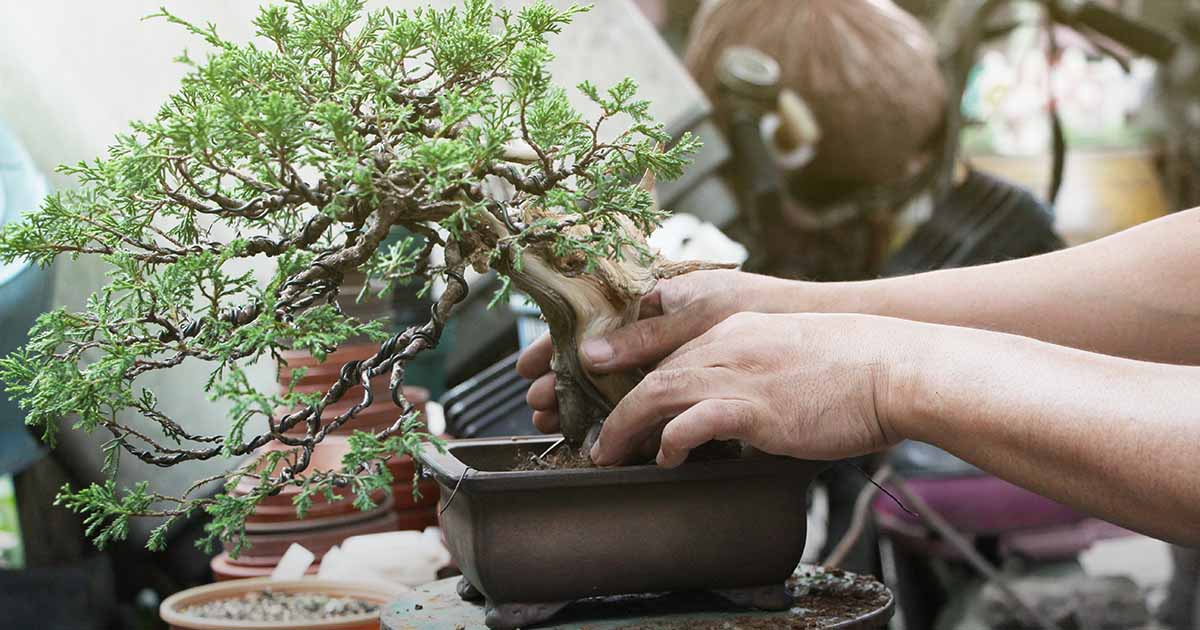Examine This Report on lava rock bonsai soil
If you have ever been captivated by the art of bonsai, you may well be asking yourself if Particular soil is necessary to cultivate these miniature masterpieces. The answer is Of course! Distinctive soil is important for the wellbeing and vitality of bonsai trees.On this page, we are going to take a look at the different sorts of soil and substrates Utilized in bonsai cultivation, such as natural and inorganic possibilities.
We will also uncover advised soil mixtures for different bonsai species, including deciduous, coniferous, and indoor types. From akadama and pumice to moss and river sand, we'll dive in to the fascinating globe of bonsai soil and help you realize why it's a vital Portion of cultivating these exquisite trees.

Bonsai soil
What is bonsai soil?
Bonsai soil is a specialized type of soil that is specifically formulated for growing and maintaining bonsai trees. Unlike regular garden soil, bonsai soil is well-draining and provides the necessary nutrients and moisture balance for the tree's root system. The composition of bonsai soil is carefully designed to meet the unique needs of bonsai trees, ensuring their health and longevity.
The importance of bonsai soil
The choice of soil plays a crucial role in the success of your bonsai tree. The right soil provides optimal drainage, allowing excess water to flow freely and preventing root rot. It also promotes a healthy and well-developed root system, which is essential for the overall health and growth of the tree. Bonsai soil retains moisture while allowing air to reach the roots, striking the perfect balance for the tree's needs. Choosing the right bonsai soil is essential for maintaining a healthy and thriving bonsai tree.
Bonsai substrates
What are bonsai substrates?
Bonsai substrates refer to the different materials that can be used to create the ideal soil composition for bonsai trees. These substrates are carefully chosen to meet the specific needs of different species of bonsai trees and to ensure proper water drainage and nutrient availability.
Different types of bonsai substrates
There are various types of bonsai substrates available, each with its own unique characteristics and benefits. Some common bonsai substrates include:
- Organic materials: These include ingredients such as bark, peat moss, and coconut coir. Organic substrates help retain moisture and provide essential nutrients to the bonsai tree.
- Inorganic materials: These involve components like pumice, lava rock, and akadama. Inorganic substrates supply exceptional drainage, making sure that extra water would not accumulate throughout the roots of your bonsai tree.
- Soil amendments: They're substances that are included for the soil mixture to boost its properties. Examples of soil amendments involve perlite, vermiculite, and sand. They improve the soil's aeration, h2o-holding capability, and nutrient availability.
By comprehending the differing types of bonsai substrates and their Homes, you could choose the most fitted one particular on your bonsai tree's demands.
Organic and natural or Inorganic Soils
Natural and organic soils for bonsai
Organic soils for bonsai are made up of normal components which include bark, peat moss, coconut coir, and compost. These elements give a abundant supply of nutrients with the bonsai tree and encourage healthier root improvement. Organic and natural soils even have good h2o retention Homes, making certain which the tree receives adequate dampness involving watering classes. Nevertheless, it is important to note that natural and organic soils may stop working as time passes and develop into compacted, resulting in very poor drainage and likely root troubles.
Inorganic soils for bonsai
Inorganic soils for bonsai encompass supplies like pumice, lava rock, akadama, and soil amendments like perlite or vermiculite. These resources have exceptional drainage Qualities, protecting against waterlogged soil and promoting aeration throughout the roots. Inorganic soils are desired by numerous bonsai fanatics due to their longevity and talent to deliver a stable setting for your bonsai tree's root procedure. On the other hand, they may call for extra Recurrent watering and extra fertilization, as they don't maintain as much humidity or nutrients as organic soils.
Advantages and drawbacks of working with organic and inorganic soils for bonsai
Picking out in between organic and natural and inorganic soils on your bonsai tree is dependent upon a variety of things, such as the particular species of tree, your weather, and private Tastes. Listed here are the pluses and minuses of every:
Organic soils:
- Professionals: Deliver nutrients, great water retention, boost healthier root enhancement.
- Disadvantages: May perhaps break down over time, prospective for lousy drainage if not appropriately managed.
Inorganic soils:
- Professionals: Superb drainage, long-lasting, secure ecosystem for roots.
- Disadvantages: Less water retention, may possibly have to have a lot more Repeated watering and fertilization.
By looking at the pluses and minuses of both organic and inorganic soils, you can also make an knowledgeable decision dependant on the particular requirements of your respective bonsai tree.
Soil parts
Crucial elements of bonsai soil
Bonsai soil is usually composed of three principal factors: grit, natural issue, and clay. These elements do the job together to produce the ideal soil framework for the bonsai tree's root procedure.
- Grit: Grit, like sand or perlite, supplies drainage and aeration in the soil. It can help reduce waterlogging and permits air to get to the roots.
- Natural issue: Organic issue, for example compost or bark, delivers nutrients into the bonsai tree. It also helps retain dampness and Enhance the soil's All round framework.
- Clay: Clay particles supply some drinking water retention characteristics and assist bind the soil jointly. On the other hand, far too much clay can cause poor drainage and compaction.
Position of every soil component
Every single soil component performs an important job in creating a effectively-balanced and wholesome surroundings with the bonsai tree's roots.
- Grit: Grit delivers the mandatory drainage and aeration during the soil. It stops the roots from sitting in stagnant water, lowering the potential risk of root rot and advertising General root wellbeing.
- Natural and organic make any difference: Natural and organic matter provides essential nutrients into the bonsai tree. It aids in dampness retention and contributes to the general structure of your soil.
- Clay: Clay particles assistance bind the soil alongside one another and provide some water retention capability. Nonetheless, it is vital to stability the amount of clay to stay away from problems like lousy drainage and compaction.
By being familiar with the roles of every soil element, you'll be able to create a well balanced bonsai soil blend that meets the precise requirements within your tree.

Recommended Bonsai soil mixtures
Common bonsai soil mixtures
There are several common bonsai soil mixtures that have been proven effective for various types of bonsai trees. These mixtures typically consist of a combination of inorganic substrates, organic matter, and soil amendments.
Some of the commonly used bonsai soil mixtures include:
- Akadama, pumice, and lava rock: This mixture is popular among bonsai enthusiasts for its excellent drainage and water retention properties.
- Akadama, lava rock, and natural make any difference: This combination combines some great benefits of inorganic substrates With all the nutrient-wealthy Homes of organic and natural issue.
- Pumice, perlite, and bark: This combination gives great drainage and aeration even though retaining some dampness and delivering nutrients.
These are typically just some examples of bonsai soil mixtures, and the ideal mixture will depend on the particular requirements within your bonsai tree and your local weather.
Variables to contemplate when picking out a bonsai soil combination
When picking a bonsai soil mixture, it is vital to take into account the following variables:
- Species of bonsai tree: Diverse species have various humidity and nutrient necessities. Investigation the particular requirements of one's tree to select a soil combination that fulfills its necessities.
- Weather: The climate you live in can impact the moisture retention Houses on the soil. Evaluate the regular humidity and temperature in your town When picking a soil combination.
- Watering behavior: Your personal watering habits and regime should align Using the soil mixture you choose. Some mixtures require extra Recurrent watering, while others keep humidity for longer intervals.
- Funds: Some soil components may be more expensive than Other people. Contemplate your price range when picking out a soil mixture.
By having these things into account, you can decide on a bonsai soil mixture that provides the top rising conditions for the tree.
Deciduous Bonsai soil
Greatest soil composition for deciduous bonsai
Deciduous bonsai trees, for example maple or birch, have precise soil requirements to support their development and wellness. The top soil composition for deciduous bonsai commonly features a combination of natural make a difference, inorganic substrates, and soil amendments.
A encouraged soil composition for deciduous bonsai may involve:
- Akadama: Presents excellent drinking water retention even though letting for drainage. In addition it releases nutrients slowly as time passes.
- Pumice: Promotes aeration and drainage within the soil, stopping waterlogging.
- Bark or peat moss: Adds organic matter towards the soil, supplying nutrients and moisture retention.
This soil composition ensures that the roots of deciduous bonsai trees acquire the right equilibrium of humidity, nutrients, and oxygen for best advancement.

Coniferous and Pine soil
Ideal soil mixture for coniferous and pine bonsai
Coniferous and pine bonsai trees have specific soil requirements due to their water retention needs and preference for acidic soil. An ideal soil mixture for coniferous and pine bonsai should provide good drainage while retaining moisture and maintaining the desired pH level.
A recommended soil mixture for coniferous and pine bonsai may include:
- Akadama: Provides excellent water retention while allowing for sufficient drainage. It releases nutrients slowly over time.
- Pumice: Encourages aeration and drainage within the soil, blocking waterlogged roots.
- Peat moss: Provides natural and organic make any difference and acidity into the soil, developing a really perfect pH stage for coniferous and pine trees.
This soil mixture ensures that the roots of coniferous and pine bonsai trees receive the right equilibrium of humidity, nutrients, and acidity for his or her certain requirements.
Akadama
What's akadama?
Akadama is really a type of clay soil that is greatly used in bonsai cultivation. It's known for its exceptional drinking water retention get more info Qualities, which ensure a gradual supply of moisture to the bonsai tree's roots. Akadama is additionally prized for its capability to launch nutrients gradually after a while, offering a regular source of nourishment for that tree.
Great things about using akadama in bonsai soil
Using akadama in bonsai soil features a number of Gains:
- Water retention: Akadama has Extraordinary water retention Qualities, allowing it to hold moisture devoid of turning into waterlogged. This ensures that the bonsai tree's roots get a regular supply of drinking water, advertising and marketing healthier expansion.
- Nutrient launch: Akadama little by little releases nutrients to the soil as time passes, furnishing a constant source of nourishment with the bonsai tree. This lessens the need for Recurrent fertilization and will help preserve a well balanced nutrient profile.
- Aeration: Even with its water retention capabilities, akadama also offers sufficient aeration on the bonsai tree's roots. It makes it possible for air to reach the root procedure, avoiding difficulties including root rot due to deficiency of oxygen.
By incorporating akadama check here to the bonsai soil, you are able to create an best expanding ecosystem to your tree, making sure its overall health and vitality.

Lava rock
How lava rock benefits bonsai soil
Lava rock is a popular component in bonsai soil mixtures due to its excellent drainage and aeration properties. It is typically used in conjunction with other substrates to create the ideal soil composition for bonsai trees.
The benefits of lava rock in bonsai soil include:
- Drainage: Lava rock provides excellent drainage, preventing waterlogging and ensuring that excess water flows freely through the soil. This helps prevent root rot and provides a healthy environment for the roots to thrive.
- Aeration: The porous nature of lava rock lets air to circulate in the soil, supplying oxygen to your bonsai tree's root program. Suitable aeration is important for healthier root development and All round tree advancement.
- Longevity: Lava rock is often a tough substance that doesn't break down quickly. This ensures that the soil construction continues to be secure after some time, reducing the need for Repeated soil replacements.
Lava rock is obtainable in numerous sizes and styles, enabling for personalisation depending on the precise needs of the bonsai tree and soil prerequisites.
Different types of lava rock
You'll find differing kinds of lava rock that may be Employed in bonsai soil mixtures, like:
- Black lava rock: Black lava rock is actually a generally utilised product in bonsai soil mixtures. It provides excellent drainage properties and adds an aesthetic element to the overall presentation on the bonsai tree.
- Purple lava rock: Purple lava rock is yet another common choice in bonsai soil mixtures. It offers identical drainage and aeration Rewards as black lava rock but has a distinct reddish colour that adds visual interest to your container.
Equally black and pink lava rocks are extensively offered and may be very easily integrated into your bonsai soil mixture.
Potting
Important methods for thriving bonsai potting
Potting is a critical procedure in bonsai cultivation, as it right impacts the wellbeing and development in the tree's roots. Here are several necessary guidelines for profitable bonsai potting:
- Select the ideal pot size: Choose a bonsai pot that permits for root advancement whilst still offering a snug fit. Keep away from pots which are also substantial, since they may lead to extreme soil humidity and very poor root development.
- Use bonsai wire: Protected the tree during the pot using bonsai wire to be sure balance. This helps prevent the tree from shifting or getting uprooted through watering or powerful winds.
- Trim and distribute the roots: Prior to potting the bonsai tree, diligently trim and unfold out the roots. This encourages outward growth and prevents root tangling or root-bound challenges.
- Include mesh screens: Position mesh screens about the drainage holes at The underside in the pot to prevent soil erosion and ensure good drainage.
- Use fresh bonsai soil: When potting, often use fresh bonsai soil to supply the mandatory nutrients and ideal growing circumstances with the roots.
By subsequent these important suggestions, it is possible to make sure An effective potting system and endorse the overall overall health and development of your bonsai tree.
The job of bonsai pots in soil dampness Handle
Bonsai pots Perform a crucial role in soil moisture Management, specifically impacting the health and development from the tree. Bonsai pots are generally shallow and possess drainage holes, making it possible for extra h2o to flee and preventing the soil from becoming waterlogged.
The design of bonsai pots promotes evaporation and air circulation, which assists control soil dampness ranges. The shallow depth and huge opening from the pot expose a lot more area place in the soil to your air, aiding in dampness evaporation. This helps prevent the roots from sitting in excessively soaked soil, minimizing the risk of root rot and various drinking water-similar concerns.
On top of that, the drainage holes in bonsai pots let any excess water to flee, avoiding waterlogged soil and endorsing aeration around the roots. Proper aeration is important for the health and growth of the root technique, making sure the bonsai tree receives the necessary oxygen for expansion.
By using bonsai pots created for effective dampness Regulate, you are able to make a favorable setting for your bonsai tree's roots and advertise its Over-all overall health and vitality.
In summary, selecting the right bonsai soil is vital to the achievement and overall health of your bonsai tree. Comprehension the differing types of bonsai substrates, the function of natural and organic and inorganic soils, The crucial element components of bonsai soil, and the assorted encouraged soil mixtures will help you give the exceptional expanding situations in your bonsai tree. Whether or not you have a deciduous or coniferous bonsai, incorporating components like akadama and lava rock can enhance the soil's drainage and nutrient availability. Furthermore, listening to potting procedures and utilizing bonsai pots made for dampness Command will further assistance the thriving advancement of the bonsai tree. With good knowing and implementation of bonsai soil procedures, you may take pleasure in the elegance and artistry of bonsai cultivation For many years to come back.
